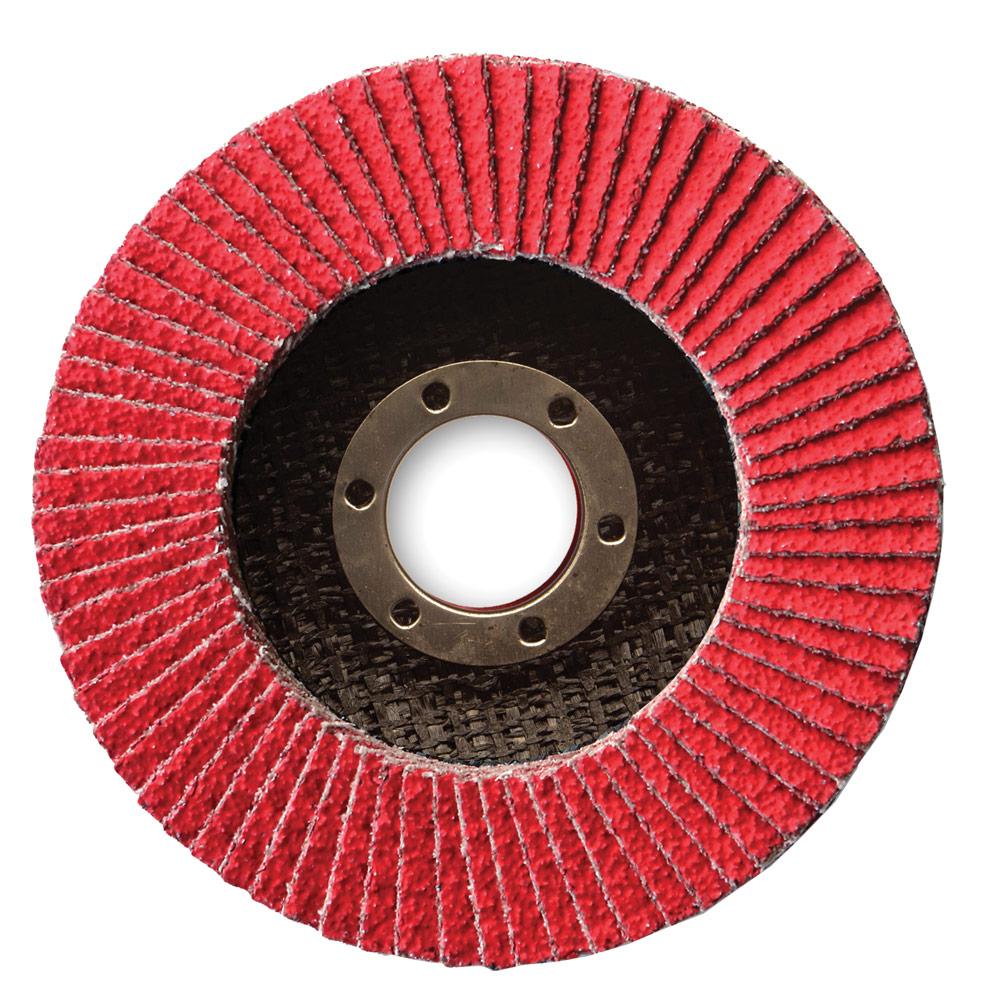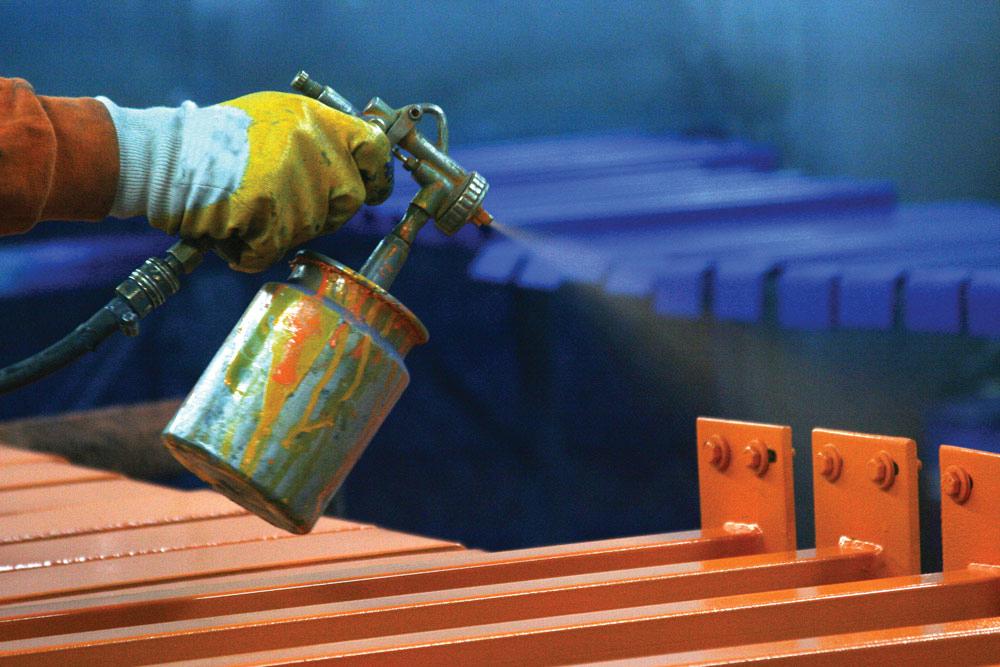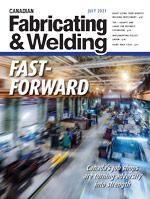Editor
- FMA
- The Fabricator
- FABTECH
- Canadian Metalworking
Paint prep steps
The abrasive choices available to prep for paint are broad; consider the parts, your tools, and your team to determine what will work best for you
- By Rob Colman
- July 29, 2021
- Article
- Fabricating
Preparing a metal part to accept paint can be labour-intensive and time-consuming. However, it is a critical step to ensure the paint will adhere and last.
Although all paint prep involves the same general steps, shops have many abrasives options that will do the job.
“The thing about abrasives is there’s no one formula that fits all,” said Frank Prenda, V.P. sales and marketing, Gemtex Abrasives. “People do things differently depending on the tools and the personnel they have available.”
Start Clean
Before you choose an abrasive or apply a grinding process to the part, it’s important to ensure that the part is free of any dust, dirt, or oil that can affect your abrasive or the substrate you are working with. The primer or paint manufacturer can supply some guidance in this regard. Be sure to clean the part both before and after grinding so that any debris from the grinding and sanding process is removed ahead of primer or paint application.
Rough to Smooth
A properly prepared surface requires the removal of excess material to create an even scratch pattern that will hold the layer of paint effectively to the specifications of the end customer.
“If a company is manufacturing garbage dumpsters, obviously those specifications are not going to be particularly precise,” said Prenda. “But a retail operation that requires a painted countertop or shelves, or an automotive part supplier will demand a much finer finish on a part prior to painting. The key is to determine the quickest way to that finish while minimizing scratches. You need enough texture for the paint to adhere, but it must be fine enough not to be detectable once the paint is applied.”
Generally speaking, this is a multi-part process that starts with the use of a coarse-grit abrasive to dress welds and begin addressing deep scratches in the material.
“Often an operator will start with a 36-grit abrasive to address heavy welds and spatter,” said Prenda. “If the part doesn’t require as much work, they might start with a 60 or 80 grit. With the second and third pass, they might use a 120 and 220 grit.”

One effective type of product for paint and rust removal is a non-woven nylon impregnated with abrasive grain. The structure of this type of product is an open fabric that is self-cleaning and avoids loading because material can be dissipated in its structure. PFERD
Ultimately, the product you use will depend on the finish you hope to achieve.
“What you have to ask yourself is, ‘What is the best tool for me to use to avoid having to include too many steps?’ said Steve Bell, Quebec territory manager for PFERD Canada. “Say a part has light rust on it and the operator uses a 36-grit abrasive. It takes down the rust but might then gouge the material, which might add yet more steps in the long run.”
The choice of paint also will make a difference.
“With basic industrial painting, you might finish with a 120 grit,” said Bell. “But paint on a car might require 600 grit or higher.”
Rust and Conditioning
For the removal of heavy rust or paint, a variety of other tools can add efficiencies to the paint prep process. For instance, Bell suggests the value of a particular type of grinding wheel (the CC Grind Plus) that, although a 24 grit, he says acts like a 36-grit ceramic product.
“Using this, you’re getting smaller grinding marks that wouldn’t be as noticeable when painting,” he said. “It is also designed with a rounded edge to avoid the risk of gouging the surface of the material. It’s very effective for heavy rust removal.”
Another tool that Bell notes some choose to use for rust removal is a standard twisted wire cup brush.
“This type of brush is useful for removing normal oxidization; removing burrs, slag, and scale; and for weld dressing. There are also newer designs that alter the way in which the wires are twisted so that they last longer by virtue of not all being twisted in precisely the same direction.”
Bell stressed that when using these brushes, operators should remember to use relatively light pressure.

Very skilled operators can use abrasives like this Gemtex FlapTec flap disc both to grind and finish. By altering pressure on the surface, a skilled operator can use a 40-grit disc to remove a weld and grind aggressively, then ease up on the pressure to create a finish equal to an 80- to 100-grit scratch pattern. Thus, the flap disc can do the job of two fibre discs and minimize downtime. This is a classic example of how a skilled operator can increase productivity. Gemtex
“There is a tendency to think that the harder you push on a tool, the better and faster they can do the job,” he said. “But if you push too hard on these brushes, the bristles are going to be bent. Once that happens, the rounded edge is going to touch the surface of the material instead of the bristle end. It will heat up, and the wire will break due to too much friction.”
Another effective type of product Bell and Prenda recommend for paint and rust removal is a non-woven nylon abrasive impregnated with grain.
“The structure of this type of product is an open fabric that is self-cleaning and avoids loading because material can be dissipated in its structure,” Bell explained. “This means it can last longer as well.”
“The key to paint or rust removal is to remove it without digging into the parent metal,” said Prenda.
Another issue that occasionally arises is having to manage the conditioning of metal that has some type of filler connected to it. Prenda noted that the best abrasive to use in this case is an aluminum oxide or zirconia sanding disc coated with a lubricant that minimizes heat build-up and loading of the disc.
“It’s rare that a shop plans to paint aluminum, but this type of abrasive, which we refer to as our SMD product, is effective on aluminum as well because when grinding on aluminum, the heat generated in the process can melt the metal and cause galling on the disc,” he explained. “This type of product helps avoid that.”
Choose Your Grit Profile
Not all flap discs are created equal, of course. Aluminum oxide discs are the introductory-level products that are the least expensive and most common, but Prenda notes that the choice can depend on how much you want to spend and how fast you want the work to proceed.
“If you use zirconia grain, which is more friable, meaning it fractures more easily, the cost of your discs is going to be a little higher, but you may cut your production time by four to five minutes,” he said. “Ceramic grain is even better quality and may speed your processing time by another eight to 10 minutes. It’s a matter of deciding how much you want to spend and how well your operators handle the product.”
Check Your Tools
All the abrasives mentioned above are very effective for your part prep, but it’s important to be sure you have the power tools to support your choice.
“Some shops only have a basic die grinder, whereas others have variable-speed grinders,” said Bell. “It’s important to consider what options you have in the shop before investing in certain abrasives. For instance, a non-woven abrasive like our Policlean wheel provides the greatest value when used on a variable-speed tool. The performance of all of your accessories are going to be enhanced when used at the proper speed—they last longer and are more effective. Running some tools at a higher RPM than they are rated for will wear them out faster without providing their ultimate benefit.”
Do What Works for You
Ultimately, Prenda says, a shop gets the best value from its tools when it understands its team members.
“What some companies do, if they don’t have a skilled operator, they will provide the operator they have with an 80- or 100-grit disc,” he said. “No matter how hard he presses, it’s not going to ruin the part. It takes longer, but there is no fear of damaging the piece.”
In other cases, a very skilled operator will be able to complete all the paint prep with one disc.
“He can take a 50-grit disc and remove the weld with hard pressure, and then with feathered movements with light pressure, that disc will act like an 80-grit disc,” said Prenda. “He might buff that really quickly with a nylon wheel and be ready to paint. The key is to understand your operators and know what they require.”
Editor Robert Colman can be reached at rcolman@canadianfabweld.com.
Gemtex Abrasives, www.gemtexabrasives.com
PFERD Canada, www.pferdcanada.ca
About the Author

Rob Colman
1154 Warden Avenue
Toronto, M1R 0A1 Canada
905-235-0471
Robert Colman has worked as a writer and editor for more than 25 years, covering the needs of a variety of trades. He has been dedicated to the metalworking industry for the past 13 years, serving as editor for Metalworking Production & Purchasing (MP&P) and, since January 2016, the editor of Canadian Fabricating & Welding. He graduated with a B.A. degree from McGill University and a Master’s degree from UBC.
subscribe now


Keep up to date with the latest news, events, and technology for all things metal from our pair of monthly magazines written specifically for Canadian manufacturers!
Start Your Free Subscription- Industry Events
MME Saskatoon
- May 28, 2024
- Saskatoon, SK Canada
CME's Health & Safety Symposium for Manufacturers
- May 29, 2024
- Mississauga, ON Canada
DiPaolo Machine Tools Open House 2024
- June 4 - 5, 2024
- Mississauga, ON Canada
FABTECH Canada
- June 11 - 13, 2024
- Toronto, ON Canada
Zoller Open House & Technology Days 2024
- June 12 - 13, 2024
- Ann Arbor, MI





















